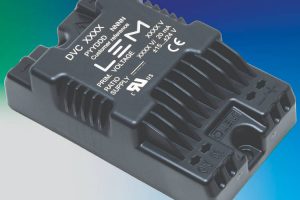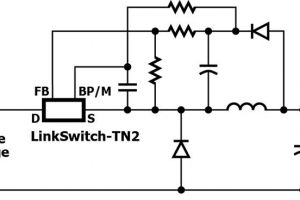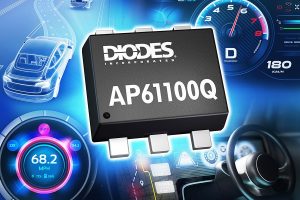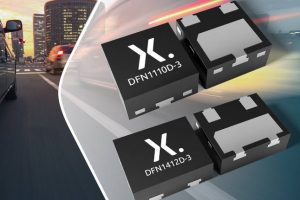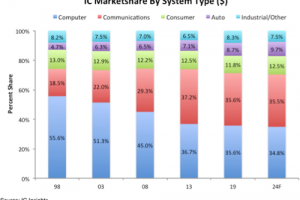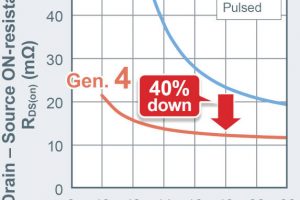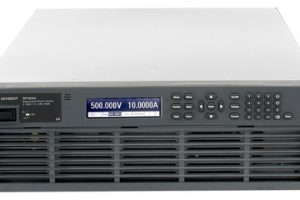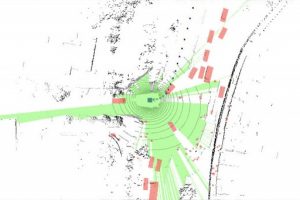Imagination technologies has created a GPU product line specifically for automotive use, building functional safety throughout the design to minimise the need for system-level safety intervention when meeting ISO 26262 requirements, according to the company. The automotive market is important to Imagination, which claims that over 200 million vehicles already have its GPUs in their digital cockpit displays and infotainment systems. “OEMs, Tier ...
Automotive Electronics
News articles relevant for automotive content, whether in terms of components, power, communications, infotainment or testing.
1kV isolated voltage sensors meet IRIS for rail traction
LEM is aiming at rail traction and industrial applications with a series of isolated voltage sensors for ac, dc and pulsed use. DVC 1000 series sensors are panel-mount and measure 29 x 51 x 89mm – 131.6cm3– and 57g. A DIN rail mounting adaptor is an option. “LEM developed the DVC 1000 to be compliant with the International Railway Industry Standards [IRIS],” ...
Dc-dc works straight from 400V EV battery
Power Integrations has qualified its 550V LinkSwitch-TN2 dc-dc converter IC to AEC-Q100 for automotive use. Designed for non-isolated down-conversion, and numbered LNK3206GQ, it can deliver 7W in a fly-back circuit or 360mA in buck converter form, from 60 to 550Vdc in either case. Regulation, claims the company, i sbetter than +/-5% across line voltage, load, temperature and component tolerances. “Featuring an integrated 750V ...
Automotive 1A PoL converter has PWM and PFM for better efficiency
Diodes is aiming at automotive point-of-load converters with a 1A buck converter that can run from 5V and 3.3V rails. Output can span 600mV to 3.6V. Called AP61100Q, the chip has synchronous rectification – with a 110mΩ high-side mosfet and 80mΩ low-side mosfet. Operation is across 2.3 – 5.5V and -40 to +125°C (ambient, 150°C junction), as well as at 2.2MHz ...
AEC-Q101 qualified discrete semiconductors in DFN packages
Nexperia has announced a range of automotive-qualified discrete semiconductors in DFN packages, claiming it to be industry’s widest portfolio. Included are bipolar transistors, n-channel mosfets, p-channel mosfets, Schottkys, Zeners, switching diodes and protection diodes, as well as resistor-equipped transistors and LED drivers. “Automotive qualified discrete leadless packages range from the very small DFN1006BD-2 [1 x 0.6 x 0.5mm] up to DFN2020D-3 ...
UK GaN transistor maker leads European power module consortium
Cambridge GaN Devices (CGD) is to lead a €10.3m project to develop intelligent GaN power modules. Called GaNext, and part of the Penta programme, its partners include academic and commercial organisations from the UK, German and The Netherlands – Infineon is one of the partners (list below) The modules are intended to address gate drive and EMI issues associated with fast-switching ...
Auto segment to show strongest semi market CAGR
The automotive IC segment is expected to show the biggest CAGR 2019-24 of all the IC segments at 9.7%, says IC Insights. Even so, auto will still represent under 10% of the total chip market in 2024. Over the past 21 years, the communications IC segment almost doubled its share of the total IC market from 18.5% in 1998 to ...
Rohm’s 4th gen 1.2kV SiC mosfets
Rohm has announced a 4th generation of 1.2kV silicon carbide mosfets, honing them for driving the traction motors of electric vehicles as well as industrial equipment power supplies. “For power semiconductors, there is often a trade-off between lower on-resistance and short-circuit withstand time,” said the company. “Rohm was able to improve this relationship and reduce on-resistance per unit area by ...
2kV 20kW tester for electric vehicles
Keysight has added a 2kV ±30A 20kW model to its RP7900 series of instruments for battery and electronics testing in hybrid and electric vehicles. Called RP7973A, it is desigend to run from 400V or 480V three-phase and is capable of two quadrant operation – if can feed power back into the mains. “The regenerative design enables the energy normally consumed to ...
To improve self-driving algorithms, add the concept of empty space
Teaching self-driving artificial intelligence about the empty space around it could improve the recognition of surrounding objects, according to researchers at Carnegie Mellon University – combining the merit of classic mapping and deep learning for 3D object detection. According to the university, when tested against a standard benchmark, the new method outperformed the previous top-performing technique – improving detection by ...
 Electronics Weekly Electronics Design & Components Tech News
Electronics Weekly Electronics Design & Components Tech News

